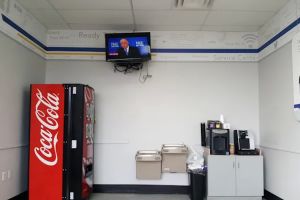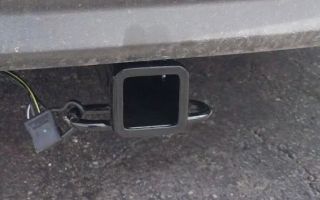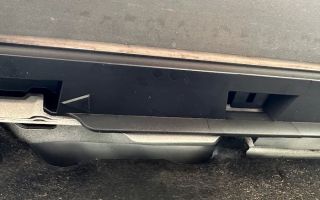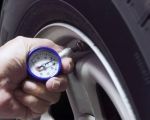How to Detect and Fix a Faulty Car Battery: A Step-by-Step Guide
As a car owner, there's nothing more frustrating than being stuck with a dead battery, especially when you need your car the most. After all, the battery is one of the most critical components in ensuring your vehicle runs smoothly. Fortunately, detecting and fixing a faulty car battery is often a straightforward task that doesn't require a professional mechanic—provided you know what signs to look for and how to address them. In this article, I’ll walk you through how to detect a bad battery and share simple, practical solutions for getting your car back on the road.

NTB-National Tire & Battery
6315 Prentiss School Dr, Canal Winchester, OH 43110, USA
1. Common Signs of a Faulty Car Battery
Before you dive into fixing your car's battery, it’s important to know how to identify the warning signs that indicate a problem. Understanding these symptoms early on can save you time, money, and potential breakdowns. Here are a few common signs that your car battery may be failing:
- Slow engine crank: If your car is slow to start, and you hear the engine turning over sluggishly, this could be a sign of a weak battery.
- Dim or flickering headlights: A struggling battery may not provide enough power for all the electrical systems in your car, leading to dimming lights or flickering headlights.
- Dashboard warning light: Modern vehicles often have a warning light on the dashboard that alerts you to a battery issue. If this light comes on, it could mean the battery or alternator is malfunctioning.
- Corroded battery terminals: Inspect the battery terminals for signs of corrosion, which often appear as white, crusty deposits. This can prevent the battery from charging properly.
- Old age of the battery: Car batteries typically last around 3-5 years. If your battery is older than that, it may be nearing the end of its lifespan and prone to failure.
Knowing these signs can help you detect a faulty battery early and take action before you're left stranded.

Pep Boys
1200 W Washington Blvd, Los Angeles, CA 90007, USA
2. How to Test Your Car Battery
Once you’ve noticed the signs of a bad battery, the next step is to test it to confirm if it’s the source of the problem. There are a couple of methods you can use to test your battery at home:
Using a Multimeter
A multimeter is a handy tool for measuring the voltage of your car battery. Here’s how you can test it:
- Turn off your car and open the hood to access the battery.
- Set your multimeter to DC voltage (usually represented by a "V" with a straight line and dotted line beneath it).
- Place the red (positive) multimeter probe on the battery’s positive terminal and the black (negative) probe on the negative terminal.
- A healthy, fully charged battery should read about 12.6 volts or more. If your battery is reading below 12 volts, it may need charging or replacement.
Using a Load Tester
If you suspect the battery may be failing under load, using a load tester can give you a better idea of its overall condition. A load tester applies a load to the battery while checking its voltage. If the voltage drops significantly under load, the battery is likely bad and needs replacing.
3. How to Fix a Faulty Car Battery
Once you’ve determined that your car battery is the problem, there are a few things you can do to fix it, depending on the issue at hand. Here are some common solutions:
Jump-Starting Your Battery
If your battery is dead or extremely weak, the first step is to jump-start it. This process involves using jumper cables to connect your car’s battery to a fully charged battery in another vehicle, which will give your battery enough power to start the engine. Here’s how to jump-start your battery:
- Place both vehicles in “park” or “neutral” and turn off both engines.
- Connect the red (positive) jumper cable to the positive terminal of the dead battery and then to the positive terminal of the good battery.
- Connect the black (negative) jumper cable to the negative terminal of the good battery and then to an unpainted metal surface on the dead car (not the battery itself).
- Start the engine of the working car and allow it to run for a few minutes.
- Attempt to start the dead vehicle. Once it starts, let it run for a while to charge the battery.
Cleaning Corroded Battery Terminals
If your battery is still functional but experiencing issues due to corrosion, you can clean the terminals yourself. Simply mix a solution of baking soda and water, then apply it to the terminals with a brush or cloth. This will neutralize the corrosion and improve the connection between the battery and the cables.
Recharging the Battery
If your battery is low on charge but not entirely dead, you can use a battery charger to recharge it. Ensure that the charger is set to the correct voltage and follow the manufacturer's instructions for a safe and effective charge. Recharging can restore the battery’s performance without needing a full replacement.
4. When to Replace the Battery
If your battery is still not working properly after cleaning or recharging, it may be time for a replacement. Here’s when to consider replacing your battery:
- When the battery shows signs of internal damage, such as bulging or leaking.
- If the battery voltage consistently drops below 12 volts, even after charging.
- If the battery is over 3-5 years old and you’re experiencing frequent issues, it’s likely nearing the end of its lifespan.
Replacing a car battery is relatively easy and affordable. Make sure to choose a battery that is compatible with your vehicle’s make and model for optimal performance.
5. Preventive Measures to Extend Battery Life
To avoid having to deal with a faulty battery in the future, there are a few preventive measures you can take to extend the life of your car’s battery:
- Regularly clean the battery terminals: Keeping the terminals free of corrosion will ensure a better connection and prolong battery life.
- Turn off lights and electronics: Always turn off your car's lights and other electronics when the engine is off to prevent unnecessary battery drain.
- Keep the battery charged: If you don’t drive your car often, consider using a battery maintainer or trickle charger to keep the battery at an optimal charge level.
By following these simple tips and staying vigilant about your battery's health, you can avoid unexpected issues and ensure your car runs smoothly for years to come.




























